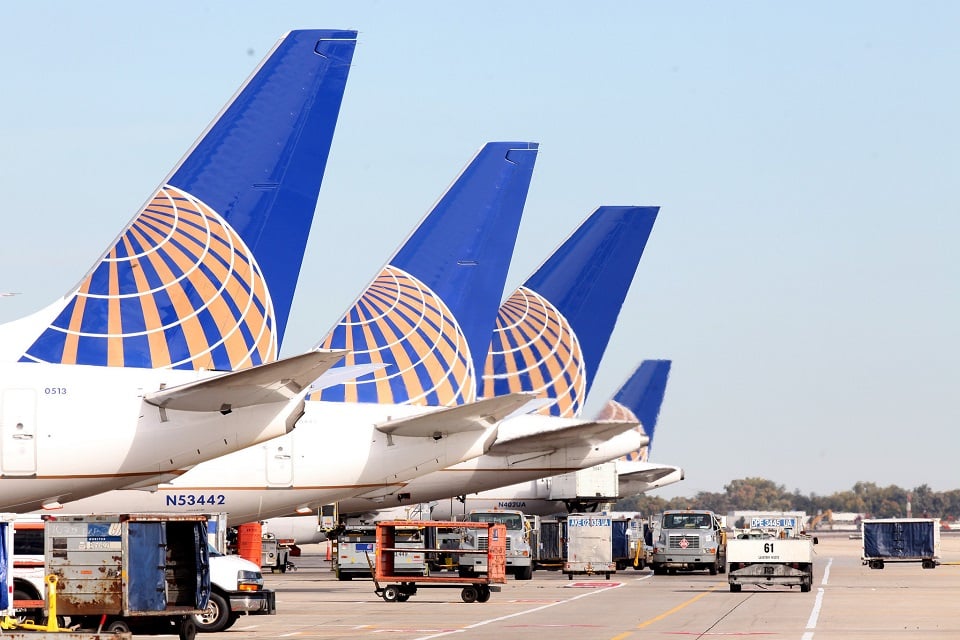Airlines
United Airlines Invests in Manufacturer of Sodium-Ion Batteries

United Airlines announced a strategic equity investment in Natron Energy, a battery manufacturer whose sodium-ion batteries have the potential to help United electrify its airport ground equipment like pushback tractors and operations at the gate. United has made substantial investments in companies developing technology to reduce aircraft emissions, but Natron is the first that has the potential to reduce the greenhouse gas footprint from United’s ground operations.
United has more than 12,000 pieces of motorized ground equipment across its operations, of which about one third are currently electric. Natron’s batteries could potentially be deployed in support of a number of uses, including:
- Charging electric ground equipment
- Charging anticipated future electric aircraft such as electric air taxis
- Allowing airport operations to manage electricity demand
- Greatly improving resiliency related to inclement weather
The sodium-ion batteries contain several features that distinguish them from existing battery technology. In addition to better output and cycle life than their lithium counterparts, testing performed by an independent testing service has shown these batteries to be nonflammable, a critical safeguard for the high usage and power that would be required for certain operations. The minerals used in sodium-ion batteries are abundant worldwide and are easily sourced, unlike lithium which is in short supply with demand expected to triple by 2025.
American Airlines Makes Equity Investment in Universal Hydrogen(Opens in a new browser tab)
Natron plans to use the funds to accelerate production at its manufacturing facility in Holland, Michigan, where it will scale operations to begin mass production of UL-listed sodium-ion batteries in 2023.
Launched in 2021, UAV is a first-of-its-kind sustainability-focused ventures fund that targets startups, upcoming technologies, and concepts that will complement United’s goal of net zero emissions by 2050 – without relying on traditional carbon offsets such as planting trees. UAV’s portfolio now includes SAF producers and other technologies including carbon utilization, hydrogen-electric engines, electric regional aircraft, and urban air mobility.

Airlines
Air India Rolls Out A350s for Delhi-New York JFK and Newark Routes

In a major development for North American travelers, Air India has announced the deployment of its state-of-the-art Airbus A350-900 aircraft on two key routes: Delhi to New York and Delhi to Newark.
The service on the Delhi-New York route will commence on November 1, 2024, while the Delhi-Newark route will see its inaugural flight on January 2, 2025.
The introduction of the air india a350 will bring significant enhancements to Air India’s offerings, particularly with the launch of its Premium Economy class. air india retrofit This new class will feature 24 wide seats arranged in a 2-4-2 configuration, providing passengers with extra legroom and a more comfortable flying experience.
Soon, Air India aircraft will feature onboard WiFi & all-new cabins: Click here
“We are encouraged by the positive guest feedback we have received from the domestic deployment of our air india a350 interior to offer our hero product on the Delhi-New York JFK and Delhi-Newark routes. This is a significant leap forward for our U.S. operations that also underscores our commitment to continuous improvement,” said Campbell Wilson, Chief Executive Officer & Managing Director of Air India.
The A350’s Business class will set new standards with 28 private suites, each equipped with full-flat beds, direct aisle access, and personal wardrobes. Economy class will be configured to accommodate 264 passengers in a 3-4-3 layout. Across all cabins, passengers will enjoy the latest Panasonic eX3 in-flight entertainment system, offering over 2,200 hours of content.
Air India’s First A350-900: Interior, Routes, &Inflight Features: Click here
This strategic deployment marks a notable enhancement in Air India’s U.S. operations, with 60% of its flights to the U.S. now featuring new or upgraded cabin interiors. The air india new international routes currently operates 51 weekly flights to five U.S. destinations: New York JFK, Newark, Washington DC, Chicago, and San Francisco.
The revamped cabins, advanced in-flight entertainment systems, and improved service standards represent air india wifi commitment to providing a superior travel experience. “We believe this enhanced offering will solidify Air India’s position as a leading carrier and attract travellers seeking a world-class flying experience between India and the United States,” the airline stated.
Seats on these flights are now available for booking on Air India’s website, mobile app, and through travel agents, ensuring that passengers can easily plan their journeys on these newly upgraded routes.
Air India Economy vs Qatar airways economy: which is best?:Click here
-

 Travel1 week ago
Travel1 week agoAir India to Expand US Operations with Three New Routes After a Decade
-

 Travel2 weeks ago
Travel2 weeks agoWhy We Should Avoid These Stamps in a Passport
-

 Airlines1 month ago
Airlines1 month agoInvestigations Reveal Fake Chinese Titanium in Boeing and Airbus Jets
-

 Tech4 weeks ago
Tech4 weeks agoChina’s CATL Plans 1,800-Mile Electric Plane Launch by 2027
-

 Airport3 days ago
Airport3 days agoTop 10 Largest Airports in the World by Size
-

 Aerospace4 weeks ago
Aerospace4 weeks agoChina’s Fighter Jets Turn Wings into Autonomous Drones
-

 Airlines4 days ago
Airlines4 days agoAir India Rolls Out A350s for Delhi-New York JFK and Newark Routes
-

 Defence3 weeks ago
Defence3 weeks agoBoeing Enhances Chinook with New Engines and Block II Upgrades at $96 Million







